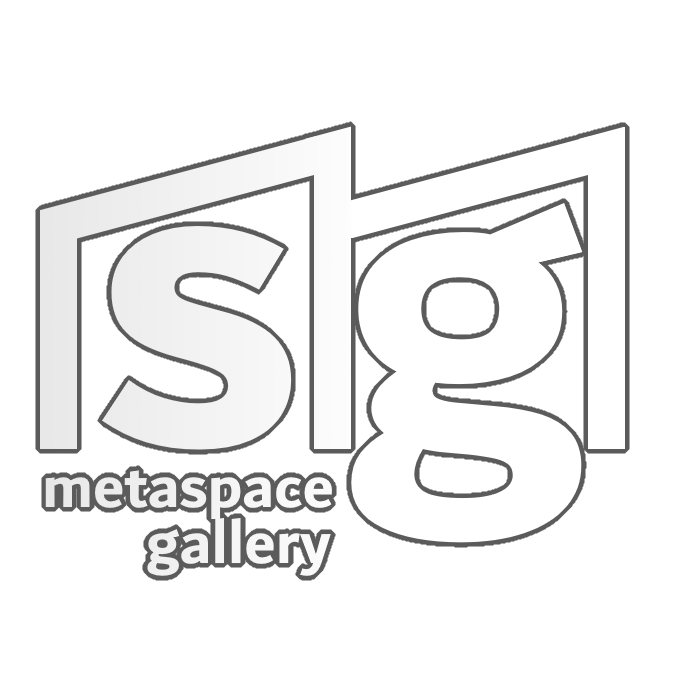Sunflowers and Roses Reflected (2025) presents a bouquet of sunflowers and roses that are realistically painted and vibrant. They are set against a digital reflection on the artwork’s lower half, in which their colours are inverted. This inversion of colour creates an immediate contrast to the work while allowing the viewer to see more details within the bouquet as the black background exposes the smaller details of the flowers.
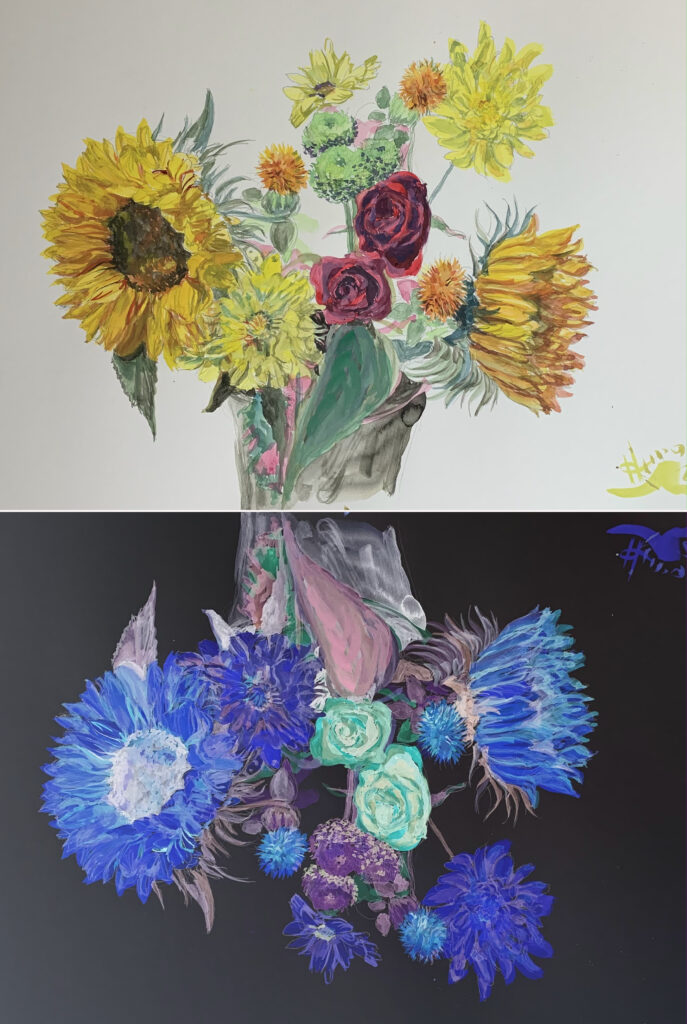
Outside of the inversion, the composition of sunflowers and roses (which have two colours that contrast well against each other) allows the top half to grab the viewer’s eye due to its contrast- especially as the green complements both colours.
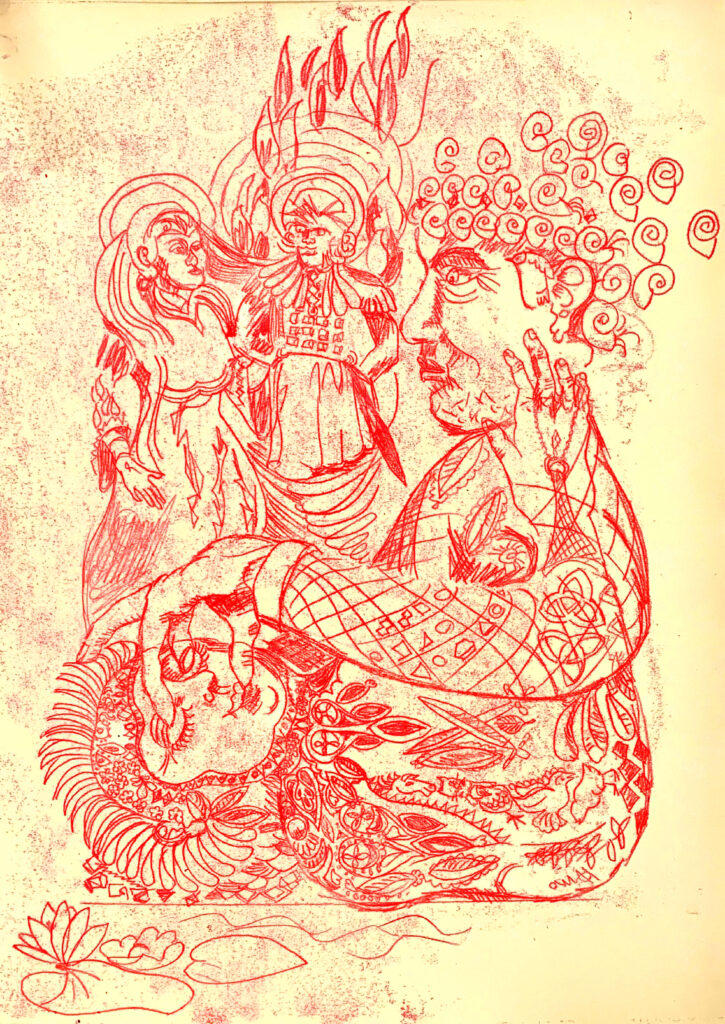
The Beauty and Discrepancy of Marriage (2024) is a monoprint that uses red ink to draw the viewer to the subjects, contrasting with the yellowed paper. On one side of the composition, the manipulation and contestation of the marriage partners are depicted as tangled together. This seems to reflect the complexity of human romantic relationships.
On the other side of the composition, there is a more idealized form of love, with the king receiving the bride with open arms, which contrasts with the tension on the other side.
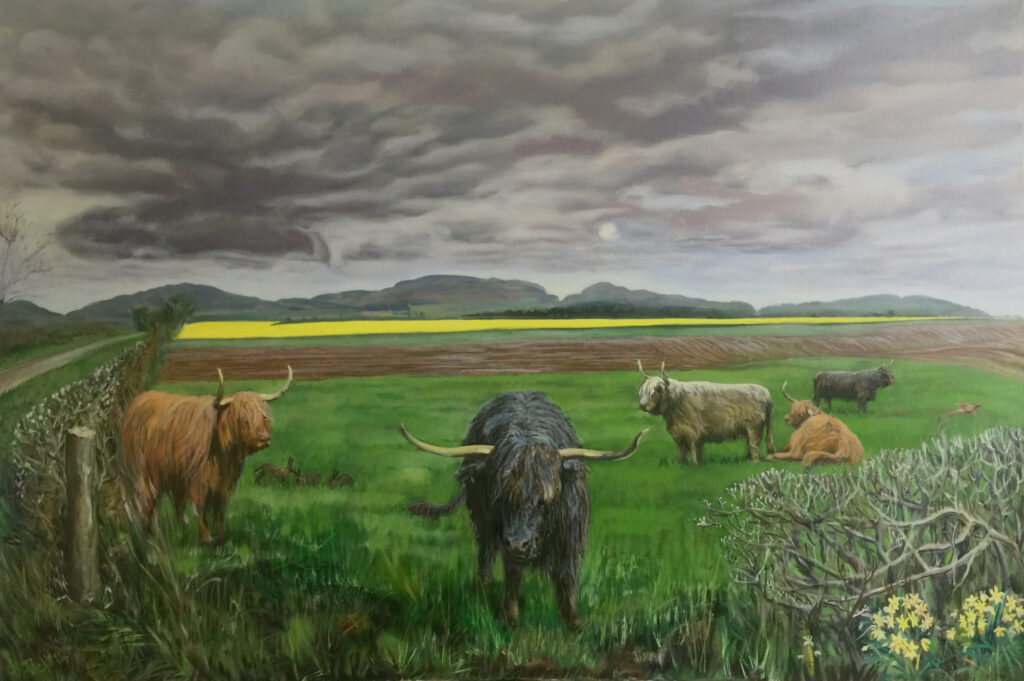
Highland Cattle Under Macbeth’s Castle (2016) successfully captures the contrast of the Scottish landscape and cultural history. The calm and vibrant greens of the landscape, along with the peaceful cattle, contrast against the moody Scottish gray skies—or a “dreich” day. The cattle themselves are of Scottish heritage as they are highland cattle. Incidentally the cattle are on the Sidlaw Hills, which is an ancient Scottish volcanic range. These elements help to deepen the painting’s connection to Scottish identity and the land itself.
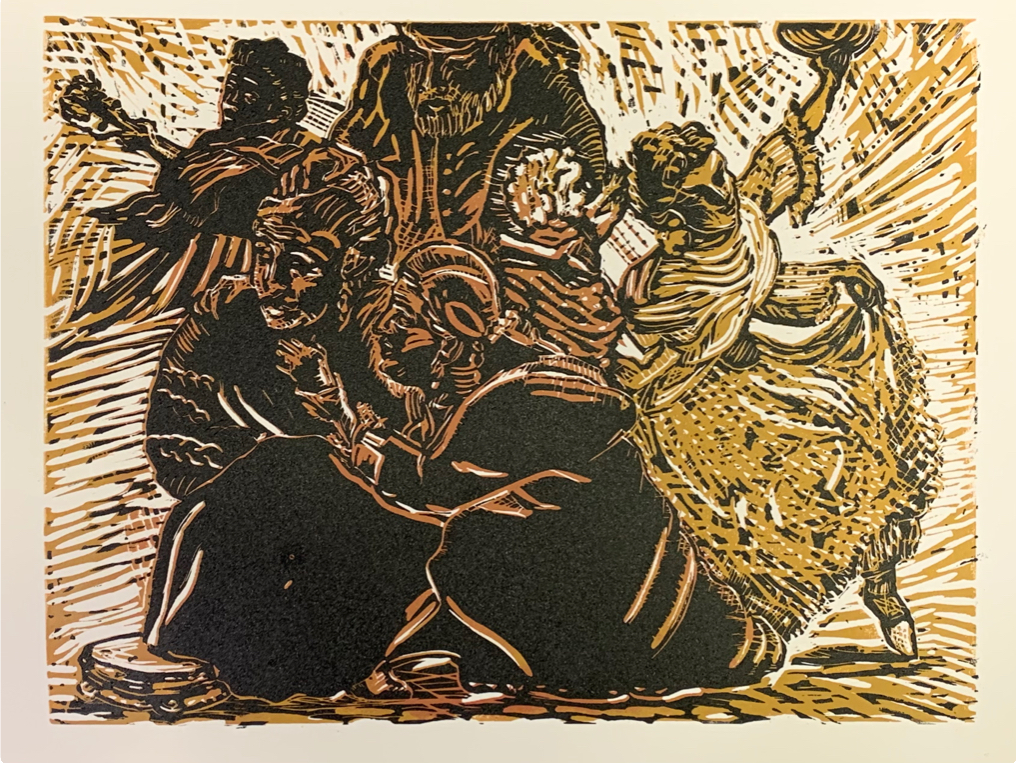
Tears Turn to Joy – From the Spanish Wake (2024) is a linocut work exploring the contrasts in loss and celebration. On one side- you have grief and loss, and the other expresses hope and celebration. The side explored as grief is much darker and uses a darker colour: orange.
The composition brings the viewer’s eyes to the more sorrowful parts, as the intense block of black helps to imply the weight of losing one’s child. Then, from these figures, the lighter figure seems as though it is a different time (perhaps after the situation has calmed down and they celebrate the ascent into heaven).
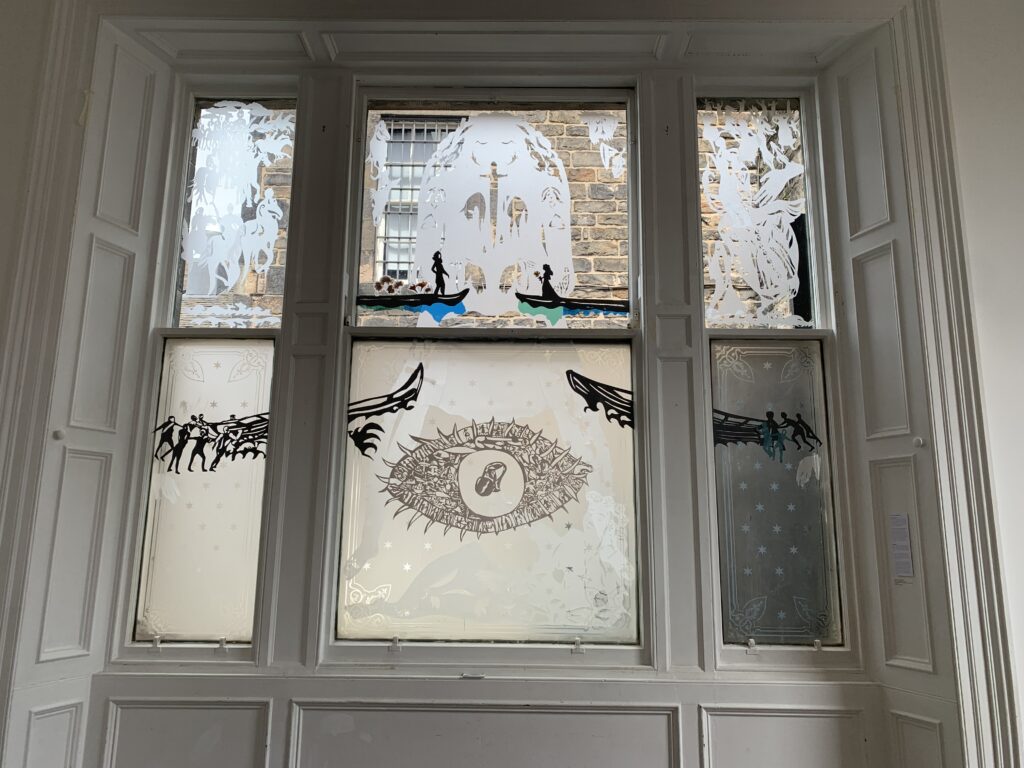
Inevitable – Marriage at the End of Time (2024) is an installation that transforms a window into a work that tells the story of a marriage between a great king and his bride. The eye within the centre is the first element to be noticed in the work; it symbolises the divine focus and guidance. Above the eye are boats carrying the bride and groom and gently moving them towards each other. This shows the inevitability of the marriage, and the heavenly horses suggest a divine insistence on the marriage.
Using a window, it is as though the viewer is looking into the future (as the title suggests, at the end of times). Natural light, which can peer through the top part of the installation, allows for the more spiritual elements to be illuminated (as light can be construed as a form of the celestial).
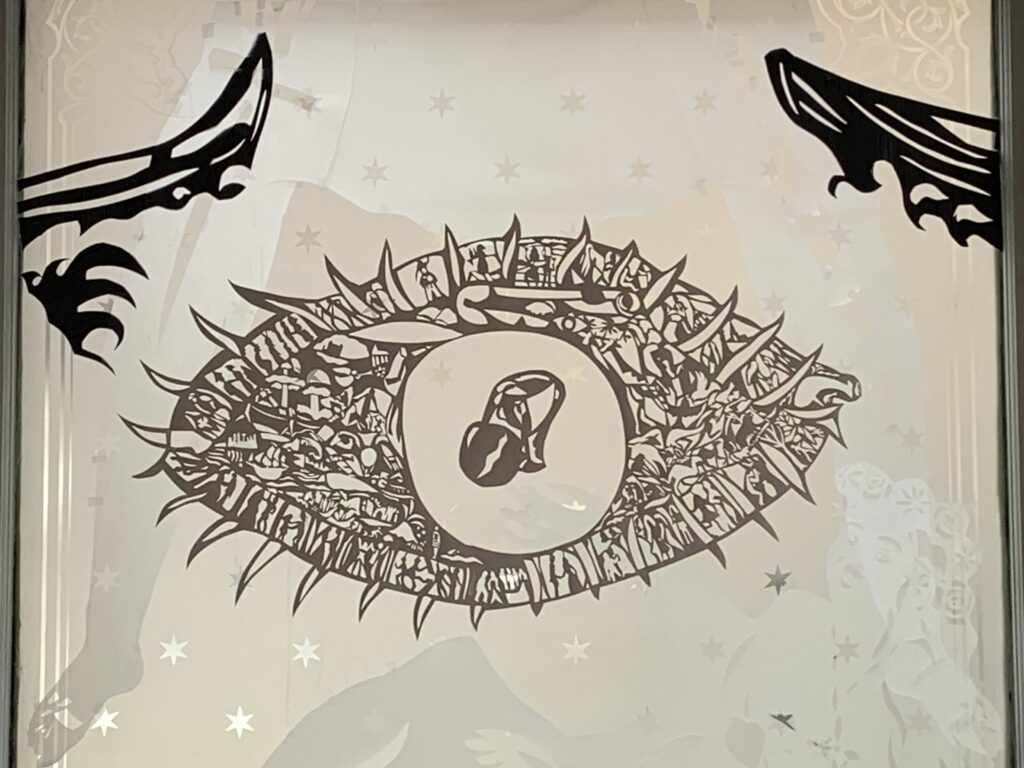
Going back to the eye within the work, the most visible elements within the eye are the lashes and the pupil itself. The lashes seem to guide the viewer around the eye, and on closer viewing, you will notice people between the lashes of the eye. To the right, there are animal pairs, which are depicted to be of mirrored symmetry, which potentially symbolises the natural connection.
Overall, all of Dr Helen Imogen Field’s artworks have formed an extensive exploration of contrast (both technical and spiritual contrast). Tears Turn to Joy – From the Spanish Wake (2024) implies an emotional contrast to the scene, while Inevitable – Marriage at the End of Time (2024) has spiritual contrast within the last marriage.
The works thus showcase great skill in all the mediums—from the great contrast between light and dark to the symbolistic contrast with divinity and the technical contrast between landscape and heritage.
